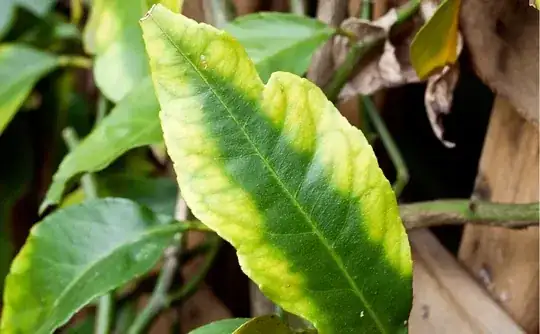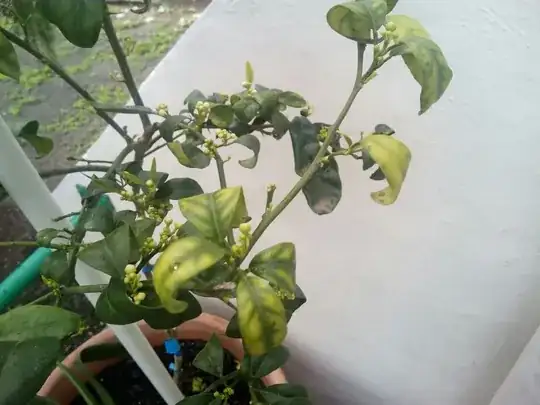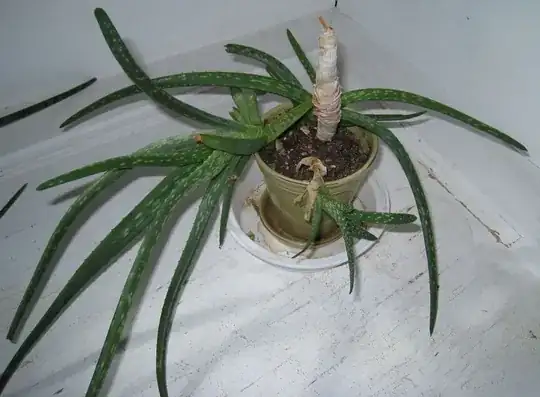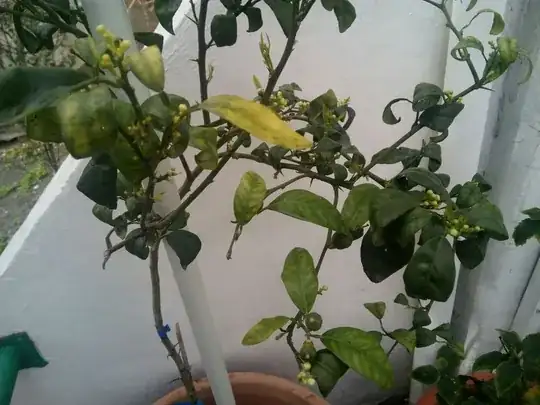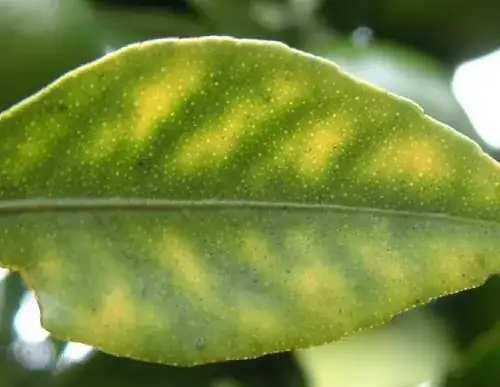Trees planted in pots are much more constrained by the care that you provide them than trees planted in the earth as the latter have much greater access to symbiotic assistance from a larger variety of micro-organisms such as bacteria and mycorrhizal fungi. So, you need to make sure that the potting mix pH is close to optimal for your plant to thrive.
As @kevinsky correctly points out, the interveinal chlorosis seen in your pictures is diagnostic for manganese deficiency. This is likely to be functional rather than actual. Manganese is likely to be deficient in acidic soils, but your plant is presumably in a potting mix in a container of suitable size. But your pictures don't clearly show the pot size, and you have not provided a picture as requested.
Citrus trees prefer a pH of 6-7 but manganese is best absorbed at a pH range of 5-6.5
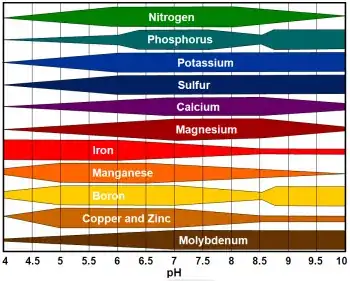
If you've only been watering with tap water with a pH of 8, you'll gradually alkalise the potting mix so that the plant develops a functional manganese deficiency. The long term solution is to repot into a citrus potting mix, but a short term fix is to apply a manganese foliar spray.
I tend to avoid watering my potted citrus trees with tap water because of this issue, and use water from my aquarium, or rain water which is usually slightly acidic.
Just for contrast, this shows the inverted V seen in functional Magnesium deficiency which does not occur at a pH of 8
